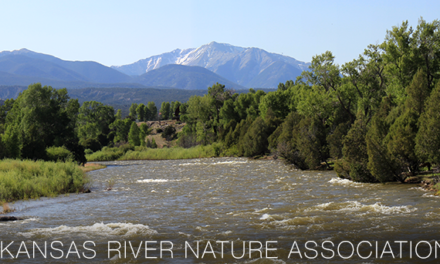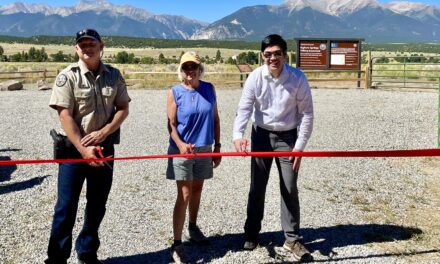
This drought map of Colorado shows that almost all of Chaffee County remains in extreme drought. However, an El Niño watch indicates developing weather patterns could bring an increased chance of wet weather for southern Colorado this fall.
The August report from the Governor’s Water Availability Task Force shows the 2018 water year, which ends Sept. 30, has been the second warmest and the fifth driest in the 123-year record.
Parts of western Colorado have seen July and August temperatures as much as 5 degrees above average, while temperatures in the northeastern plains have been near normal.
The report notes, “Monsoon rains have brought beneficial moisture to some regions, including the San Luis Valley and Arkansas Basin,” but limited precipitation in the Northwest has resulted in worsening drought conditions.
Even after an inch of rain in parts of Mesa County, the 2018 water year remains the driest on record for Grand Mesa.
The National Resources Conservation Service’s snowpack telemetry data show statewide precipitation for the water year is 67 percent of average, ranging from 47 percent in the southwest basins to 85 percent in the South Platte basin.
The Arkansas basin sits at 62 percent of average, while the Rio Grande is at 53 percent and the Gunnison is at 56 percent.
With the two previous years producing above average precipitation, reservoir storage across the state is at 86 percent, with most basins, including the Arkansas and Colorado, near normal levels.
During the August meeting of the Upper Arkansas Water Conservancy District, hydrologist Jord Gertson reported that the conservancy district currently stores a total of 4,125 acre-feet of water in various reservoirs.
Gertson reported that Buena Vista has depleted all of the water it stores in Cottonwood Reservoir.
Salida has 278.5 acre-feet of water stored in North Fork Reservoir, and Poncha Springs has 47.4 acre-feet in O’Haver Lake.
Greg Felt, conservancy district secretary, said even with an additional 17,000 acre-feet of water in the river through the Voluntary Flow Management Program, Arkansas River flows near Salida remained below 600 cubic feet per second, “some of the lowest native flow ever.”
Board Vice President Tim Canterbury said native flows at Parkdale were about 190 cfs.
Felt, also a fishing guide, noted that current conditions have created warmer water in the river, which is tough on trout.
The state drought report confirms Felt’s comments, indicating the current conditions “continue to stress fish populations, with continued fish kills reported. … Many of these areas are also impacted by ash flows and post fire-related water quality issues.”
Many farmers and ranchers have shut off their irrigation ditches early “due to lack of supply,” the report states. “Hay production is down and range conditions poor, producers are concerned about finding enough feed for cattle, resulting in continued sell off.”
Long-term weather forecasts indicate an increased likelihood of above-average temperatures for September through November, but southwestern Colorado is forecast to benefit from an increased likelihood of above-average precipitation into fall.
Additionally, an El Niño watch indicates a greater than 70-percent chance of an El Niño developing, “which could bring an increased chance of wet extremes for southern Colorado beginning this fall.”











Recent Comments